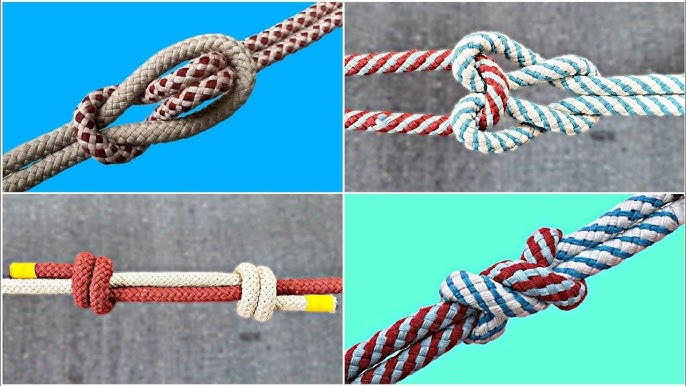Introduction to the Crock Knot
When it comes to knots, the possibilities can be overwhelming. But one knot stands out for its versatility and strength: the crock knot. This simple yet effective tie has captured the attention of outdoor enthusiasts, anglers, and DIY aficionados alike. Whether you’re securing a load or setting up camp, mastering the crock knot could make all the difference in your next adventure.
As we dive into this guide, you’ll discover not only how to tie this handy knot but also why it’s become a go-to choice for so many. From its rich history to practical applications, let’s unravel what makes the crock knot an essential tool in various fields!
History of the Crock Knot
The crock knot has a fascinating history rooted in practicality and innovation. This versatile knot is believed to have originated among fishermen who needed a reliable method for securing lines.
Over time, its popularity spread beyond fishing communities. Boaters and outdoor enthusiasts embraced the crock knot for its strength and ease of use.
As various industries adopted it, the crock knot became essential in fields like climbing and camping. The reliability of this knot made it ideal for securing gear or creating makeshift solutions.
With advancements in materials, the applications expanded further into recreational activities. Today, people from all walks of life utilize the crock knot for everything from crafting to survival situations.
Its enduring legacy speaks volumes about human ingenuity and our need to adapt tools that serve multiple purposes effectively.
Benefits and Uses of the Crock Knot
The crock knot is a versatile tool for various applications. Its primary benefit lies in its strength and reliability. Once tied, it holds firm under pressure, making it ideal for securing loads.
Many outdoor enthusiasts favor the crock knot when camping or hiking. It’s perfect for tying down tarps or creating makeshift shelters. The ease of untieing it after use adds to its appeal.
In fishing scenarios, anglers appreciate how this knot can secure lures and tackle effectively without slipping. This ensures that your gear stays put while you focus on catching fish.
Boaters also find the crock knot invaluable for mooring lines and securing equipment onboard. Its adaptability across different environments showcases its practicality.
Whether you’re an adventurer or someone who enjoys DIY projects, mastering the crock knot opens up a world of possibilities.
How to Tie a Crock Knot
Tying a crock knot is straightforward once you grasp the steps. Begin with two lengths of rope or cord, laying them parallel to each other.
Take the working end of one line and make a loop over the other line. Ensure it’s snug but not too tight at this stage.
Next, pass the working end under and through this loop. Pull gently to tighten it slightly—this will create your first half-knot.
Now, repeat the process with the second length of rope. Make another loop over the first knot and thread its working end underneath before pulling it through.
As you tighten both sides evenly, ensure they’re secure yet adjustable if needed. Practice makes perfect! With time, you’ll find yourself tying this versatile knot quickly and efficiently whenever necessary.
Who Can Benefit from Using the Crock Knot?
The crock knot is a versatile tool that can benefit various groups. Fishermen, for instance, appreciate its ability to secure lures and hooks effectively. This reliability means fewer lost catches.
Hunters also find the crock knot useful when securing gear or setting up blinds. It keeps their equipment in place during unpredictable weather.
Outdoor enthusiasts enjoy its ease of use for camping applications. Whether it’s tying down tents or securing backpacks, this knot provides peace of mind.
Even those working in construction can take advantage of the crock knot. It offers excellent load-bearing strength for bundling materials safely.
Hobbyists involved in crafts and DIY projects often employ the crock knot to add extra security to their creations, ensuring everything stays intact while they work on intricate details.
Alternatives to the Crock Knot
While the crock knot is versatile, several alternatives can serve similar purposes. The square knot stands out for its simplicity and reliability. It’s perfect for tying two lengths of rope together securely.
Another option is the bowline knot. This creates a fixed loop at the end of a rope, making it ideal for rescue situations or mooring boats. Its structure ensures it won’t slip under pressure.
For fishing enthusiasts, the Palomar knot offers strength and ease when securing hooks or lures to lines. It’s user-friendly and performs well in high-pressure environments.
Consider using the clove hitch if you need quick release capabilities. It’s commonly used in camping scenarios where you might want to secure an object temporarily without causing damage.
Each alternative has unique benefits suited to various tasks and needs, allowing users flexibility based on their specific requirements.
Conclusion
The crock knot is a fascinating and versatile tool in the world of knots. With its rich history and practical applications, it’s clear why so many people find value in mastering this technique. From fishermen to campers, various individuals benefit from its unique advantages.
Whether you’re securing gear or creating fishing rigs, understanding how to tie a crock knot can enhance your outdoor experiences. It offers reliability and strength when it matters most.
While other knots may serve similar purposes, none quite match the ease and efficiency of the crock knot. Those looking for reliable alternatives may explore options like the bowline or double fisherman’s knot; however, few can rival the versatility offered by this specific technique.
Embracing the art of tying knots opens up new possibilities for both leisure activities and essential tasks alike. The next time you need a dependable solution for securing items or crafting connections, consider reaching for that trusty crock knot.
